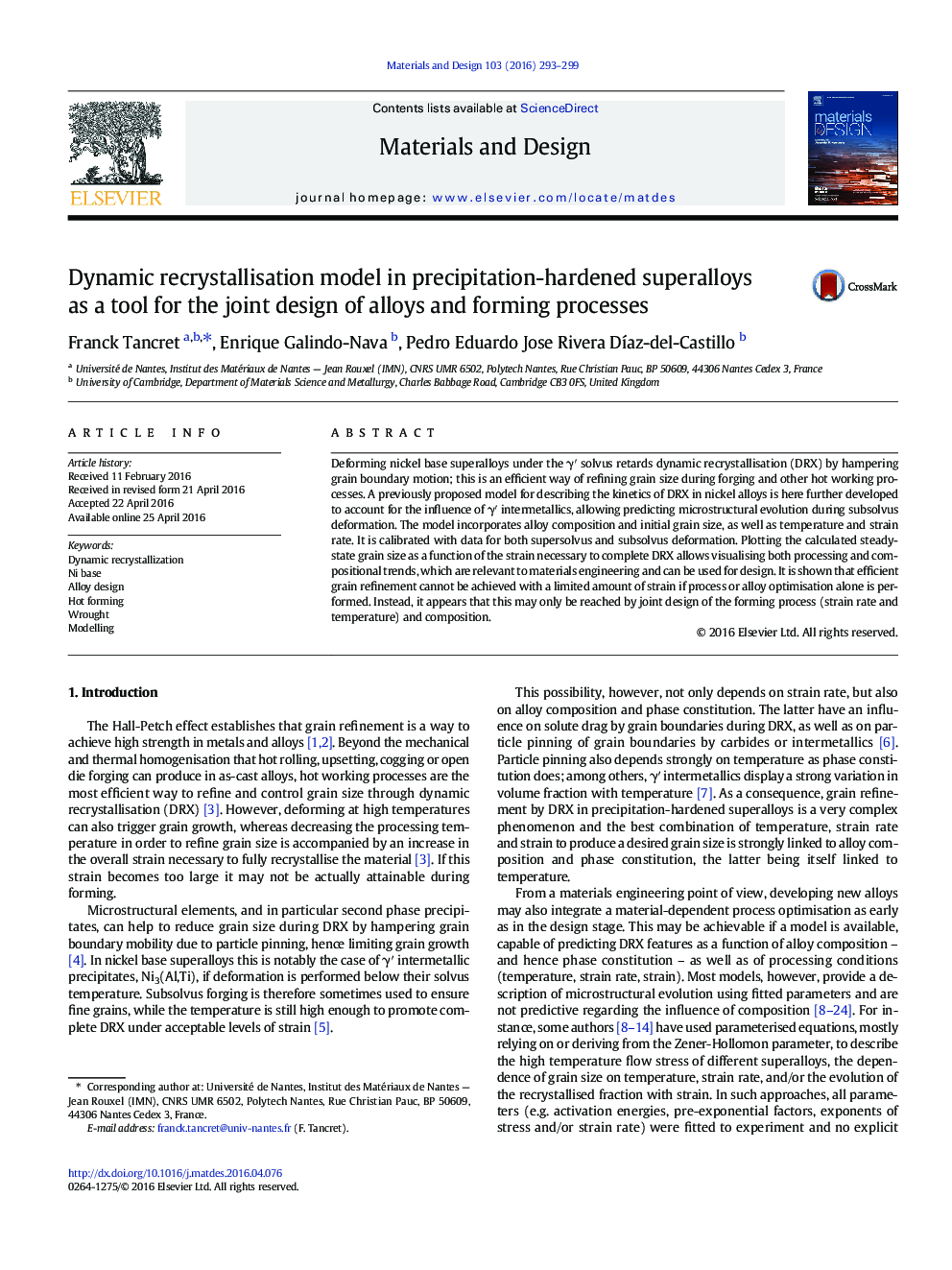| کد مقاله | کد نشریه | سال انتشار | مقاله انگلیسی | نسخه تمام متن |
|---|---|---|---|---|
| 828032 | 1470279 | 2016 | 7 صفحه PDF | دانلود رایگان |
• The dynamic recrystallisation model predicts grain size kinetics as a function of composition and processing parameters (temperature, strain rate).
• Pinning of grain boundaries by γ′ precipitates is taken into account.
• γ’, δ and M23C6 precipitate fractions are incorporated via computational thermodynamics to obtain instantaneous solute concentrations in austenite.
• A design curve criterion is introduced, plotting predicted grain size as a function of the strain to complete recrystallisation.
• The model and the curve can be used for the joint design of alloys and forming processes.
Deforming nickel base superalloys under the γ′ solvus retards dynamic recrystallisation (DRX) by hampering grain boundary motion; this is an efficient way of refining grain size during forging and other hot working processes. A previously proposed model for describing the kinetics of DRX in nickel alloys is here further developed to account for the influence of γ′ intermetallics, allowing predicting microstructural evolution during subsolvus deformation. The model incorporates alloy composition and initial grain size, as well as temperature and strain rate. It is calibrated with data for both supersolvus and subsolvus deformation. Plotting the calculated steady-state grain size as a function of the strain necessary to complete DRX allows visualising both processing and compositional trends, which are relevant to materials engineering and can be used for design. It is shown that efficient grain refinement cannot be achieved with a limited amount of strain if process or alloy optimisation alone is performed. Instead, it appears that this may only be reached by joint design of the forming process (strain rate and temperature) and composition.
Figure optionsDownload as PowerPoint slide
Journal: Materials & Design - Volume 103, 5 August 2016, Pages 293–299
